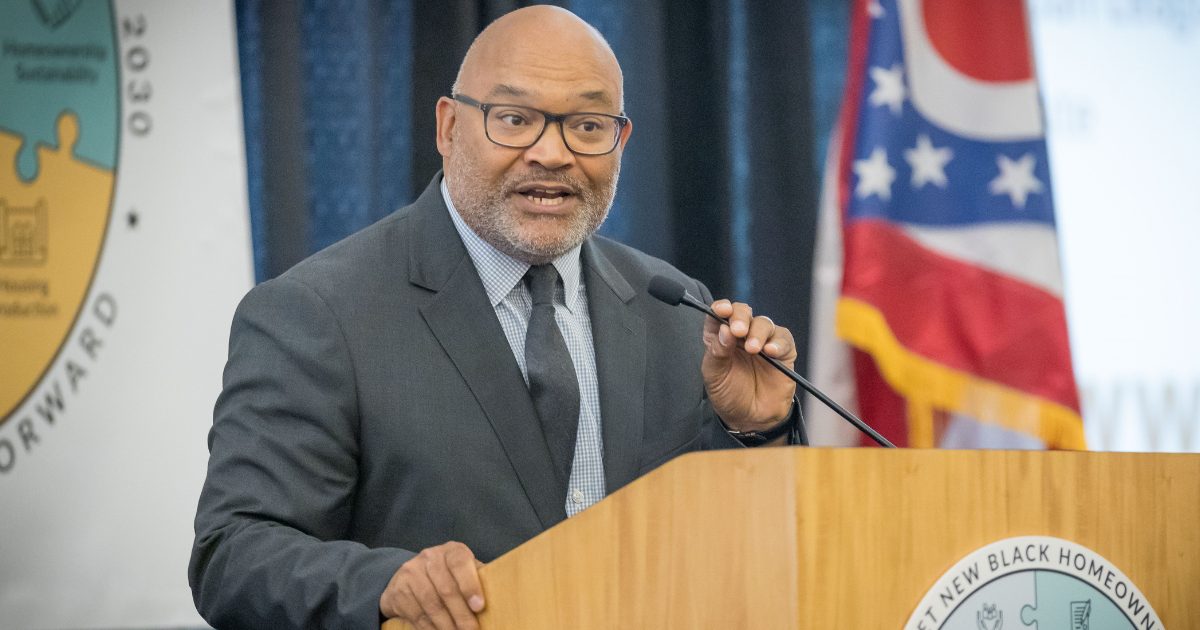
This Friday, June 18, the first federal Juneteenth holiday, members of the Black Homeownership Collaborative joined HUD Secretary Marcia Fudge; Senate Banking, Housing and Urban Affairs Committee Chairman Sherrod Brown (D-Ohio) and Congressman Tim Ryan (D-Ohio) at Cleveland State University to launch the 3 by 30 initiative, a 7-point plan to sustainably create 3 million net new Black homeowners by 2030.
The Black Homeownership Collaborative identified seven areas requiring attention to make its goal possible within nine years: 1) homeownership counseling; 2) down payment assistance; 3) housing production; 4) credit and lending; 5) civil and consumer rights; 6) homeownership sustainability and 7) marketing and outreach. Among the actions called for are increased funding for housing counseling services, a targeted down payment assistance program, and restoration of all legal doctrines and provisions of law that address systemic discriminatory policies.
The Black Homeownership Collaborative is led by a steering committee of executives from the Mortgage Bankers Association, NAACP, National Association of REALTORS®, National Association of Real Estate Brokers, National Fair Housing Alliance, National Housing Conference and National Urban League with the support of research from the Urban Institute.
You can watch the entire event here, see local news coverage of the event here, or read about it in Forbes here. We have also created a new website to support the initiative at www.3by30.org.
Joining us in Cleveland were Collaborative co-chair Cy Richardson, senior vice president for programs, National Urban League; Danielle Sydnor, NAACP Cleveland Branch president; Bob Broeksmit, president and CEO, Mortgage Bankers Association; Bryan Greene, vice president for policy advocacy, National Association of REALTORS®; Lydia Pope, president-elect, National Association of Real Estate Brokers; Lisa Rice, president and CEO, National Fair Housing Alliance; Janneke Ratcliffe, associate vice president, research & policy, the Urban Institute and Jung Choi, senior research associate, Housing Finance Policy Center, Urban Institute.
No one, however, summarized this important work and the challenges that lie ahead as succinctly and clearly as Cy Richardson, whose closing remarks set the tone for the work ahead. His remarks are recalled here in their entirety. As he makes clear, working together, in collaboration, we will “create an ecosystem, a community of practice and advocacy” that will drive us towards our goal.
“This collaborative feels different. The ethos of sharing, the ethos of collaboration. It’s the notion that it is amazing how much can be accomplished when no one cares who gets the credit. That’s what we’re proffering here. We’re coming together with shared interests. Yes, perhaps we’re wearing different jerseys, but working, sweating, bleeding for the same team, in many ways led by [HUD Secretary Marcia] Fudge. I can’t imagine the number of plans and great ideas that she had to step over when she rolled up at 451 7thStreet SW. But I’ll say that this plan is both a white glove treatment of the problem with some of the best researchers in the country and a blue-collar approach to the solutions, and I think that’s what makes us unique here.
“The second thing I’ll say is that the country, city, states, regions, are going through reopenings; economic reopenings. I think that is very important. We’ve reached a tipping point. But let’s be clear. This collaborative and its ideals and programs are not designed to take us back to March 2020. This is a plan built on reimagining the future. This is not taking us back. This is a forward-thinking document. I think that is the most important element we’re offering today. We are turning the page with a committed, focused effort.
“So the last thing I’ll say is, what could go wrong? What could be in our way? What are the barriers? We will need some blocking and tackling, Senator Brown and Secretary Fudge. But I’ll tell you that the main thing here is that we are all supportive of moving in one direction. There are others; other individuals; other individuals, meeting somewhere in this country that are threatened by these ideals; that are insecure with this notion of equity, and economic development, for people and communities of color, for household balance sheets. That’s something we have to understand and fight through, put our shoulder into the wind. Fight it – understand it and fight it. Also, though, what can trip us up internally? This Collaborative is unique in the sense that, traditionally, NAACP, the Urban League, are told that “you’re civil rights groups. You’re over there. That’s your table over there. This is an affordable housing ecosystem.” See, this Collaborative creates a venn diagram. We have overlapping interests, shared interests. Again, each of us contributing what we can to the objective: 3 by 30. So I would say, channeling my old professor, Cornel West, we do need to be wary against, as he would say, becoming intoxicated with the felicities of our own bourgeois existence. Let’s not do that. Or as my wife would say, boy, you are too certain of your rightness. Let’s not do that either. But let’s understand that we are proffering an idea rooted in data, rooted in commitment, with leaders on this stage.
“So I would say that, from the Urban League, a little bit of call and response, “are you with us,” but again, you’re here. You’ve demonstrated your commitment to this work. Thank you. So watch this space. A lot is going on. A lot will happen. Watch this space… We are trying to create an ecosystem, a community of practice and advocacy. Let’s take this next time to meet each other, share our concerns. Share our vulnerabilities and insecurities, all towards the spotlight on 3 by 30… That is how we will get there.”

